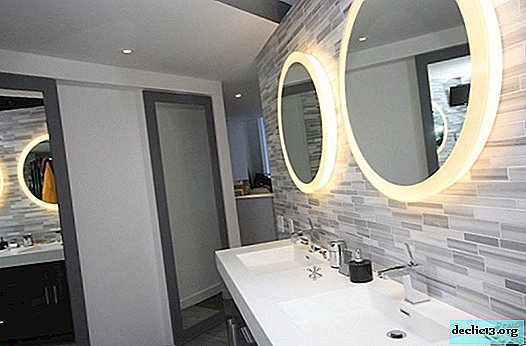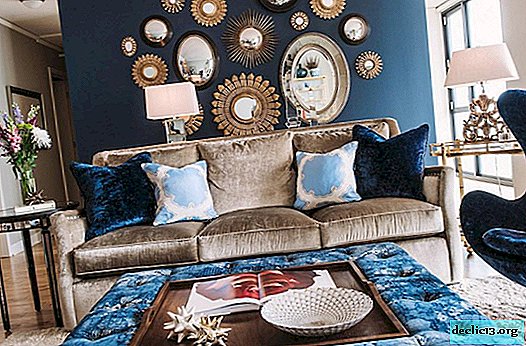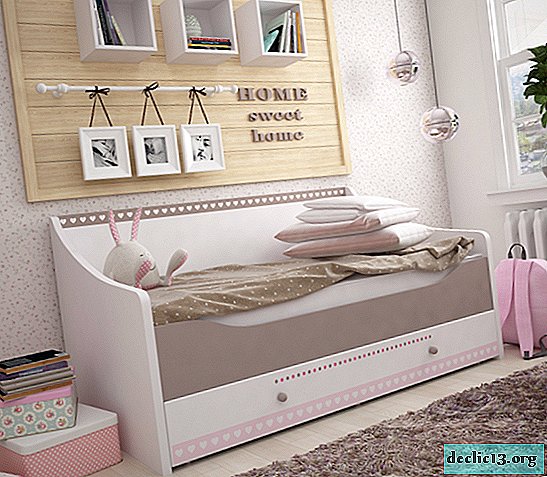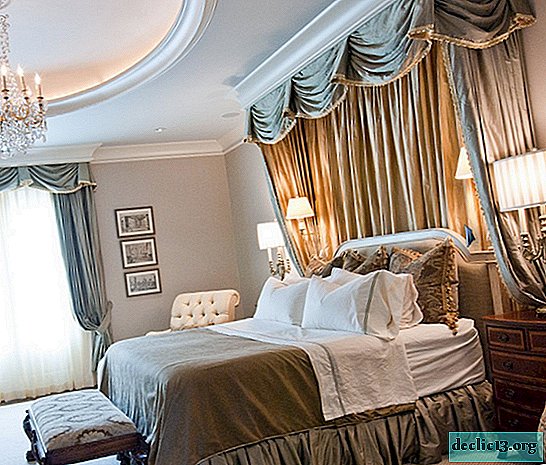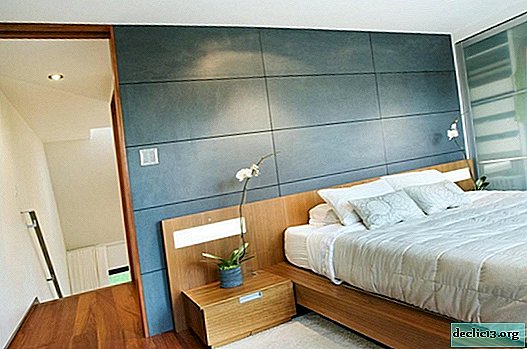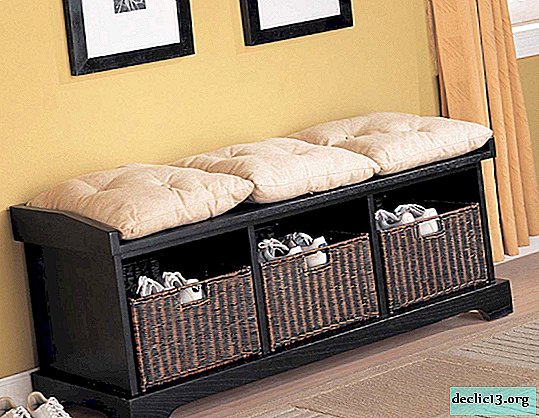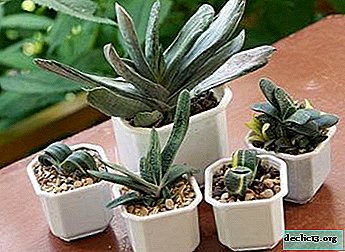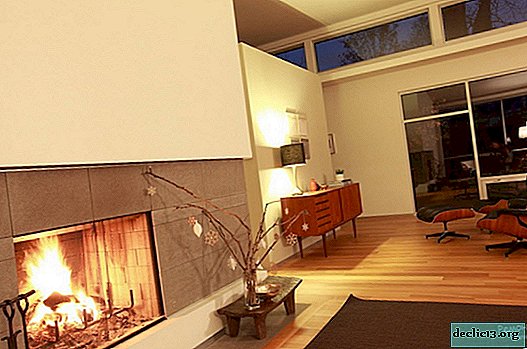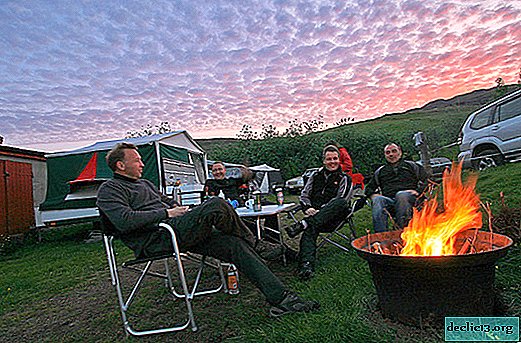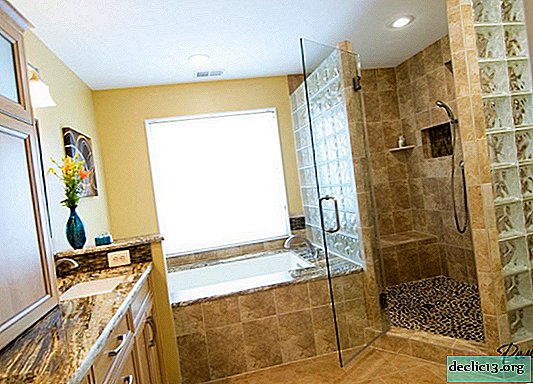Large and small mirrors in the interior of the apartment
Content:
- Features
- Location Guidelines
- Types of interior and mirror design
One of the most common household items - a mirror, in fact, has high decorative capabilities, in its quality comparable only to interior lighting. With the help of mirror surfaces, a spatial picture of the design is created, which should enliven and complement the interior.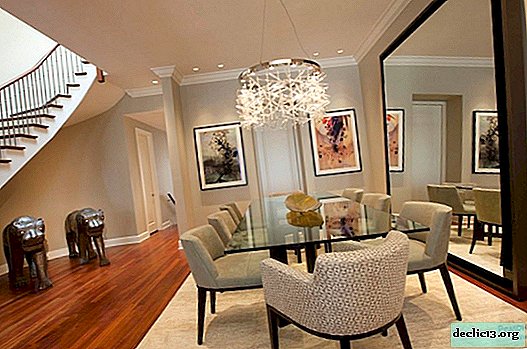

Creating volumetric space through mirrors and other reflective surfaces requires a thorough approach. Each of the parameters that a mirror has (shape, color, size, quantity) must be thought out and selected based on the requirements of the interior.
Mirror Features
The primary classification of mirrors determines the location:
- mounted;
- tabletop;
- wall mounted;
- floor;
- ceiling.
Mounted mirrors, as a rule, have a large frame and moving parts. They are exclusively suitable for large rooms, as they visually reduce space. Table and floor mirrors have an additional shockproof coating and are often used to highlight a certain part of the room (zone). Ceiling mirrors visually raise the border of the ceiling and allow you to enhance lighting by reflection. Wall - the most common, they are used both in the form of decoration, and for the spatial increase of the room. Only wall and mounted mirrors are used for their intended purpose, the rest of the views are not conveniently located.

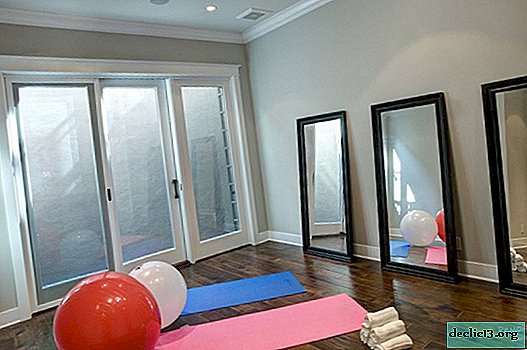
Mirror shapes are classified using simple geometric shapes:
- a circle;
- oval;
- square;
- rectangle.
Round mirrors are more often used as a decorative element, since they have the promise of the "sun". Oval to a greater extent satisfy the basic requirement - to reflect. A convenient elongated shape without angles reflects a person in full growth without taking up extra space on the wall. A square is a laconic form of a mirror that well complements strict interiors, but functionally the square is inferior to a rectangle. Long rectangular mirrors have a maximum reflection area and fit comfortably into the perimeter of the wall (or cabinet door). Free forms are attributed to individually designed non-standard models.

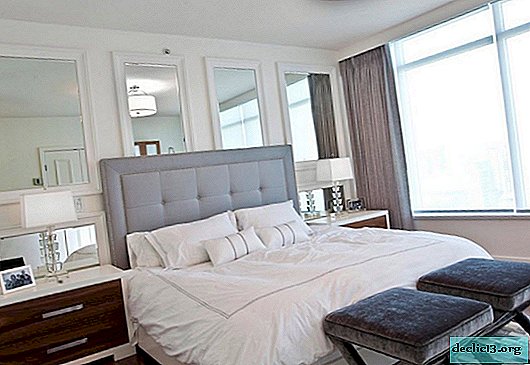
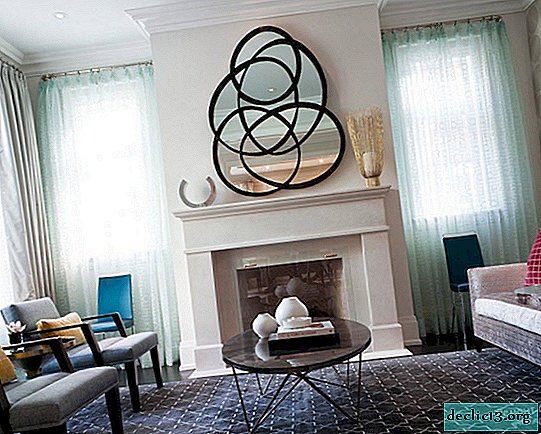
Using a mirror, you can complement the interior, or upset the aesthetic balance. In order to harmoniously combine the existing interior and mirror surfaces, you need to know about all the positive and negative features of mirrors.
Positive- the mirror always works on the visual expansion of the walls;
- due to reflection in the mirror, it will always complement the color schemes of the interior;
- the correct location of the mirror (or mirrors) will enhance the quality of lighting;
- of all types of decorative additions to the interior, the mirror is considered the most relevant.
- mirrors are very fragile;
- narrow and long mirrors distort reflection;
- Lighting directed directly at the mirror surface creates glare.
Mirror in various rooms
The mirror, as an element of decor, is applicable in any of the rooms of residential and non-residential values. However, there are rules for placing mirrors in various rooms.
Kitchen
The mirror in the kitchen plays an extremely complementary role. The most commonly used material for wall cladding in a kitchen is ceramic, which has a glossy reflective surface. With the help of mirrors, you can focus on one of the zones or supplement the interior with small wall mirrors if styling requires it.
Oversized furniture occupies most of the kitchen, and the configuration of the kitchen often has a shortage of square meters. In order to visually increase the space, mirror surfaces are used not only in the form of wall decorations and accents, but also as the outer part of furniture.
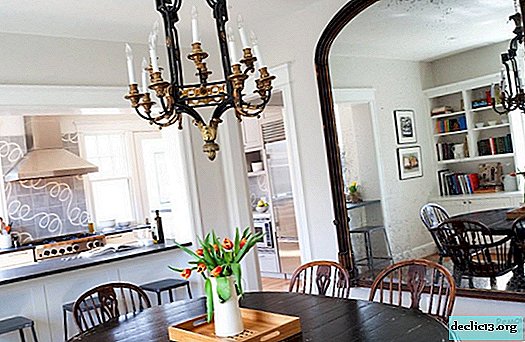
Bathroom
The best place for large wall mirrors without a frame. In the bathroom, the mirror is technically important, so the reflective surface should be large. Oval and square mirrors are used for standard bathroom interior styles. If the bathroom is decorated in the style of a boudoir, then round mirrors are more suitable.
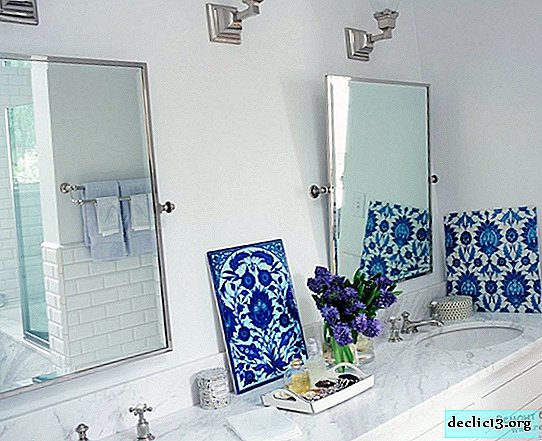

Corridor
The corridor is the home of the mirror. Mirrors are selected based on practical requirements. Large oblong shapes that occupy most of the wall are the best option.
Decorative mirrors are rarely used for the corridor. But under the conditions of a long and narrow area, decorative reflective surfaces will allow you to "push" the walls.
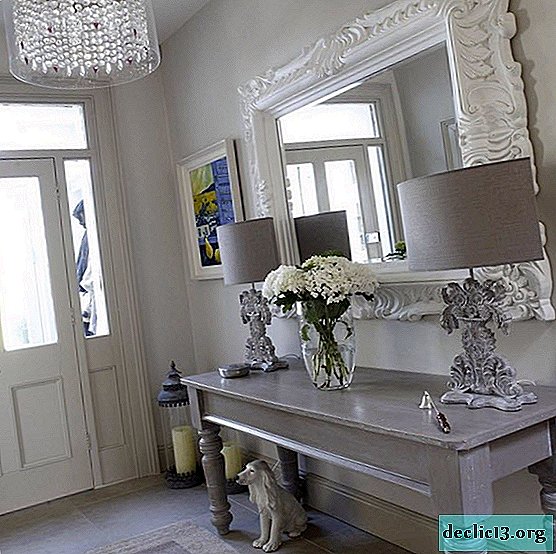

Living room
Any variation of decorating with mirrors will be appropriate for the living room. Small round and square mirrors on the walls or large massive mirrors that occupy the entire space of one of the walls. The choice depends on the features of the area and the chosen interior. In the living room, mirrors of non-standard forms, presented in the form of a work of art, are most often used.
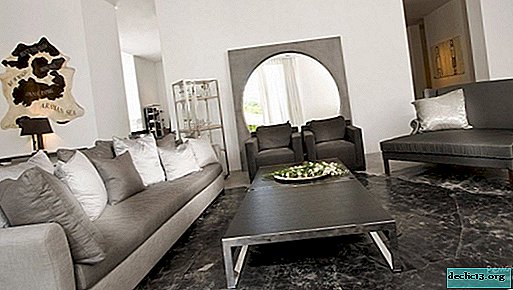
Bedroom
In the classic bedroom, mirrors play the role of additions, they are located remotely from the bed and are small in size. Given the design of modern apartments, a built-in wardrobe is often installed in the bedroom, in order to save space. In this case, the mirror doors will be the best possible choice.
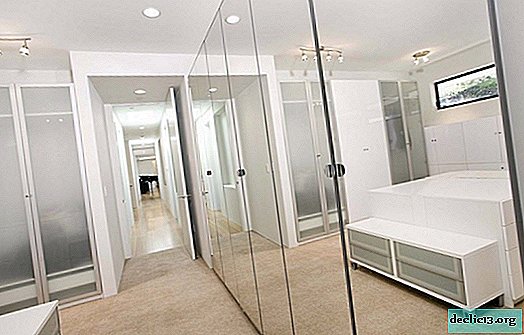
For a large bedroom, the mirror can serve as a "window". Large mirrors are placed on the floor against the wall, compensating for the shortcomings of small windows.
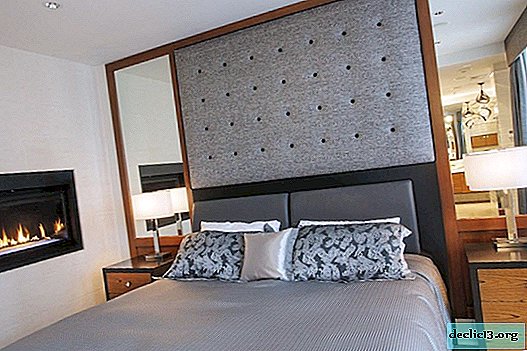

Recommendations for the correct location
The mirror has a wide range of features. Depending on the location, you can give the interior a complete, full look or distort the interior, creating a design that is negative in its perception. Practicing designers highlight a series of recommendations for mirror placement.
- minimum mirror width should be 0.5 meters;
- a large mirror should have a size of 1.7 - 1.9 meters;
- the distance from the mirror to the viewing point should be at least 1.5 m;
- mirrors are not located near the working area, since in such a place they are subject to constant pollution;
- Recreation area and reception area write, supplemented with large mirrors in the frame;
- small wall mirrors should be located above the height of a person so that the center is at eye level;
- decorative mirrors do not position below 1.5 meters from the floor;
- artificial lighting should not illuminate the mirror. An exception is the boudoir table.
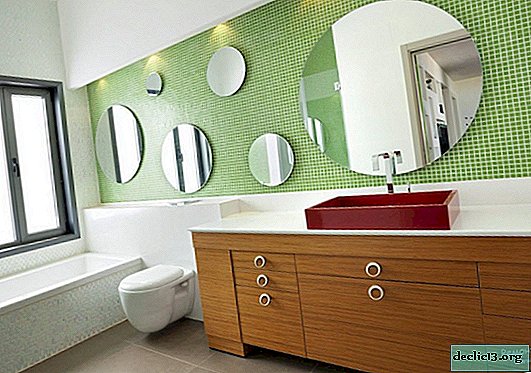
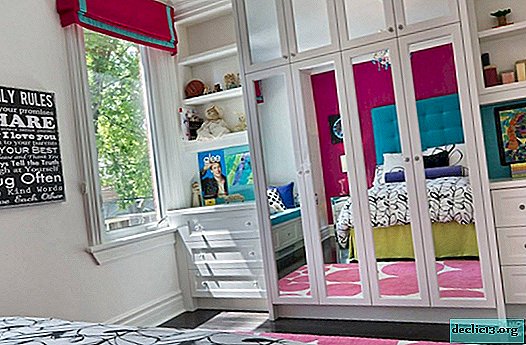
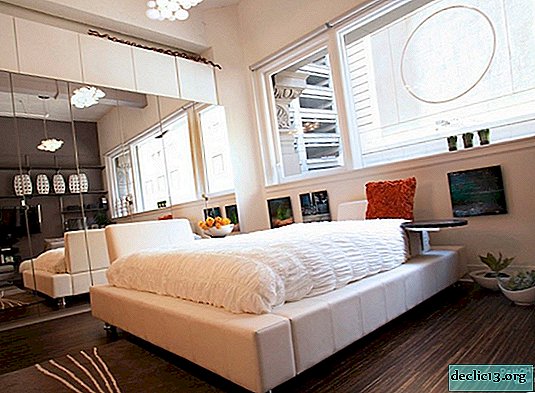
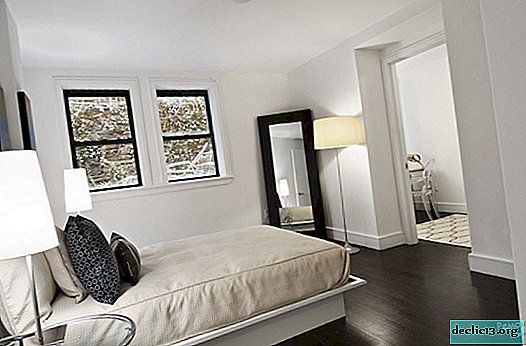
Interior styles with mirrors
Any of the interior styles can be supplemented with a mirror. Each of the main class trends in interior styling has its own characteristics in the arrangement and appearance of mirrors.
Historical interior styles require a large frame for mirrors with decorative ornaments. The Renaissance, Egyptian and Greek styles are complemented by large square mirrors with a heavy frame. Roman style and art deco also use cramped large frames, but preferably round shapes. Romanesque, Gothic and Baroque - use oval shapes and carved wooden frames. Any shape can be used in the empire style, special importance is given to a very large size and an exquisite carved frame with gilding. Classicism has the simplest requirements for mirrors: an oval or rectangular shape with a cyclically repeating floral pattern. The most unusual mirrors are found in the interior, decorated in accordance with all the laws of Art Nouveau - complex streamlined forms, complemented by a massive frame with many turns and patterns.
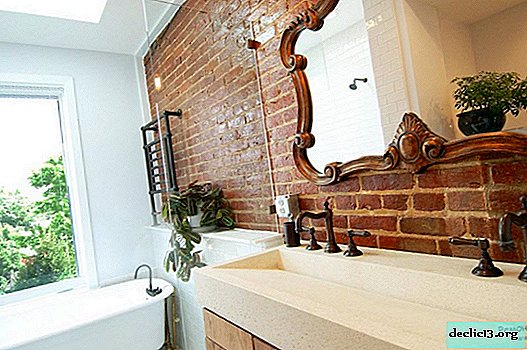
Ethnic Interior Stylesoften use the simplest forms. The African interior is complemented by a square mirror recessed into the wall. The interior in the traditions of India provides for large rectangular mirrors, divided into several sections. The decor in the Indian interior uses round small mirrors in a massive frame without unnecessary details. The Japanese style is laconicism itself, therefore, only geometric shapes in a thin dark frame. Country will complement a simple rectangular mirror with a thin frame or round with a carved frame. Soft and sunny Provence offers the use of round and ellipsoidal shapes in a figured frame.

Modern interior styles divide the decorative requirements for mirrors into two types: with large frames and frameless. Constructivism, hi-tech and minimalism use frameless mirrors. In constructivism, neon lights behind a mirror are often used. High tech requires unusual forms and plots. Minimalism represents the rigor of form. Kitsch and eclecticism require more attention to the frame than to the shape of the mirror. For kitsch, the main task is to emphasize the expressiveness of the design, so the most intricate frames are used. Eclecticism expresses the design idea through applications, so the frames are designed in the form of the sun, moon and other recognizable shapes, while being decorated with mosaics and plot carvings.
